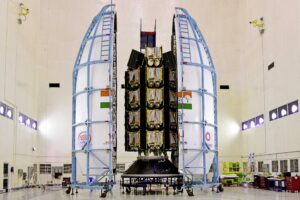
McDonald‘s, the fast-food giant, has not just served billions of customers worldwide with its signature burgers and fries but has also served as a classic case study in business schools for its unique and successful business model. What makes the McDonald’s business model so intriguing, and how has it allowed the company to maintain its status as a global fast-food leader? Let’s dive in.
The Franchise Model: Spreading the Golden Arches Far and Wide
One of the key elements that underpin McDonald’s success is its franchise model. In the late 1950s, Ray Kroc, a milkshake machine salesman turned the franchising agent for the McDonald brothers, saw the potential of replicating their efficient, assembly-line style hamburger stand across the nation. This vision led to the birth of the McDonald’s franchise model, which has been the cornerstone of the company’s expansion strategy.
Today, over 90% of McDonald’s restaurants worldwide are owned and operated by independent franchisees. This model allows the company to grow without the need for substantial capital expenditure, and at the same time, harnesses the entrepreneurial spirit and local knowledge of its franchisees.
Real Estate: The Hidden Driver of Profitability
Contrary to common belief, McDonald’s primary business is not about selling fast food, but real estate. The company owns the land and buildings of most of its franchised locations. Franchisees pay McDonald’s for the right to operate a McDonald’s restaurant, and these fees include a percentage of sales as well as rent. This strategy provides McDonald’s with a steady stream of revenue, regardless of restaurant sales, making it one of the world’s biggest commercial real estate operators.
Consistency and Efficiency: The Secret Sauce
McDonald’s commitment to consistency and efficiency, both in terms of the quality of food and service, is a critical aspect of its business model. The company’s standardization of products and processes, coupled with its innovative “Speedee Service System,” ensures that a Big Mac or fries ordered in Tokyo tastes the same as in New York. This consistency builds customer trust and loyalty.
Innovation: Adapting to Changing Consumer Preferences
Despite its focus on standardization, McDonald’s has continually innovated to adapt to changing consumer preferences and trends. From introducing healthier menu options to leveraging technology for enhanced customer experiences, McDonald’s ability to innovate has played a significant role in maintaining its market leadership.
McDonald’s business model’s success lies in its ability to combine aggressive growth strategies, operational efficiency, and adaptability. It serves as a testament to the fact that even in the fast-paced world of fast food, there’s room for steady, sustainable growth strategies.





![Read more about the article [Funding alert] Edtech startup Lead School raises $30M in Series D led by GSV Ventures](https://blog.digitalsevaa.com/wp-content/uploads/2021/04/Leadschool-P-1598000242491-300x150.png)



![Read more about the article [Startup Bharat] This Rajasthan-based NBFC is redefining rural lending, one small-ticket loan and town at a time](https://blog.digitalsevaa.com/wp-content/uploads/2022/05/MalvikaCopyofImageTagging77-1652175319090-300x150.png)
